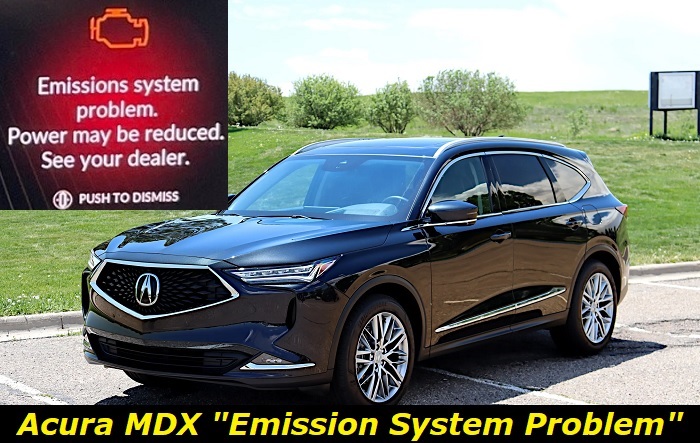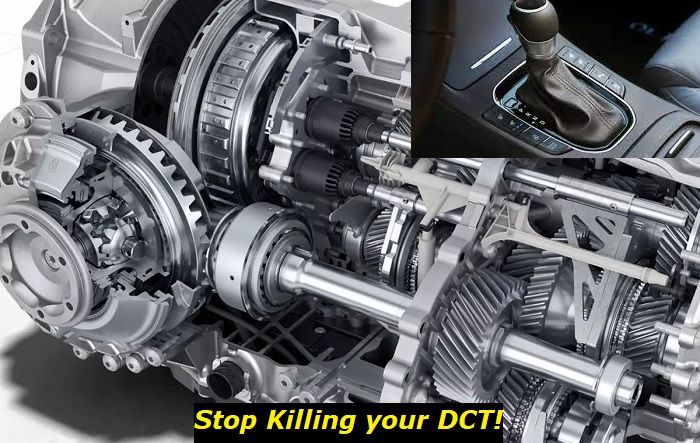The Acura MDX is a luxury SUV that was first introduced in 2001. It's been a popular choice for families and commuters alike, thanks to its spacious interior and comfortable ride. However, some MDX owners have reported issues with the emission system. "Emission system problem" message may appear on the driver information display, and the vehicle may fail an emissions test.
Emission system problem message highlights
- Common reasons:catalytic converter problems, oxygen sensor faulty, issues with fuel combustion
- How to fix:read the codes, inspect the emission system units
- Possible consequences:you won't pass the fog test
- Priority level:High
- Can you drive?Yes
- DIY repair:Impossible
- Repair price range:$300-$1,500

What is annual emissions testing?
Annual emissions testing is required in many states for vehicles driven on public roads. The test ensures that your vehicle's emission levels are within acceptable limits and helps to reduce pollution and improve air quality.
If your Acura MDX fails the emissions test, you'll need to have it repaired and retested. Depending on the severity of the problem, this can be a simple fix or a more complex repair. Either way, it's important to get the problem fixed as soon as possible to avoid further damage to your vehicle, keep yourself within the law, and avoid potential fines.
What are the problems with the emission system on the Acura MDX, and how do they impact performance and fuel economy
There are several potential problems that can occur with the emission system on the Acura MDX. While some of them can be fixed quite easily, others may require more work. Below, we've listed some of the most common causes of Acura MDX emission system problems:
- Problem with Fuel Evaporative System (EVAP)
One of the most common emission-related problems on the Acura MDX is a problem with the Fuel Evaporative System (EVAP). This system is responsible for capturing and recycling fuel vapors. However, if there's a leak in the system, it can cause fuel vapors to escape into the atmosphere.
This can impact the performance of your vehicle, as well as cause it to fail an emissions test. In some cases, you may also see the "check engine" light come on.
- EVAP pressure sensor problems
Another common issue with the EVAP system is a malfunctioning pressure sensor. This sensor is responsible for detecting leaks in the system. If it's not working properly, it may not be able to detect a leak. As a result, fuel vapors may escape into the atmosphere.
- Faulty oxygen sensor
The Acura MDX oxygen sensor is a key component of the emission system. It monitors the exhaust fumes coming from the engine and adjusts the air/fuel mixture accordingly. If the oxygen sensor is faulty, it can cause the Acura MDX engine to run lean (too much air and not enough fuel) or rich (too much fuel and not enough air).
This can lead to a decrease in fuel economy as well as an increase in emissions. In some cases, it may also cause the engine to run rough or stall.
- Clogged Acura MDX catalytic converter
The Acura MDX catalytic converter is another important component of the emission system. Its job is to convert harmful pollutants in the exhaust fumes into less harmful gases. There are various reasons why the catalytic converter may become clogged, such as:
- Use of low-quality fuel
- Infrequent oil changes
- Incorrect air/fuel mixture
If your catalytic converter becomes clogged, it can't do its job properly. This can lead to an increase in emissions as well as a decrease in performance and fuel economy.
- Leaking Acura MDX exhaust manifold
The Acura MDX exhaust manifold collects the exhaust gases from the cylinders and funnels them into the catalytic converter. If there's a leak in the manifold, it can allow harmful gases to escape before they reach the converter. Make sure to have any leaks repaired as soon as possible to avoid further damage to the emission system.
- Loose or damaged emission control hoses
The emission control hoses carry exhaust gases from the engine to the catalytic converter. If these hoses are loose or damaged, it can cause a leak in the system. As a result, harmful gases may escape, and the vehicle's performance and fuel economy may suffer.
- Software glitch
In some cases, the "Emission system problem" may appear because of a software glitch. If this is the case, you'll need to take your vehicle to a dealer or qualified repair shop to have the software updated.
- Bad battery
Another potential cause of the "Emission system problem" is a bad battery. If the battery is not providing enough power, it can affect the operation of the computer. As a result, a false-positive message may appear on the dashboard.
- The charcoal vapor canister cracks
The charcoal vapor canister is another potential cause of the "Emission system problem" message. This canister is responsible for storing fuel vapors. However, it can crack over time, which can lead to a leak in the system. When the canister cracks, the charcoal inside can escape and cause a fuel vapor leak.
This can lead to engine performance problems and may cause your vehicle to fail an emissions test. If you notice a crack in your vapor canister, it's important to have it repaired or replaced as soon as possible.
- The electrical connections on solenoids are damaged.
The EVAP system uses a number of solenoids to control the flow of fuel vapors. If the electrical connections on these solenoids are damaged, it can cause problems with the system. Make sure to check the connections and repair or replace them if necessary.
How to know what the problem is exactly?
Remember to check the error code to know what the exact problem is with your emission system. You can do this with an OBD2 reader.
If you don't have an OBD2 reader, you can take your vehicle to a qualified mechanic or dealer, and they can run a diagnostic test. This will help them to identify the problem and recommend the best course of action.
Newer Acura models allow seeing the error code without an OBD2 reader. You can find out what each Acura MDX error code means in your owner's manual or online.
How to fix an emission system problem on an Acura MDX - what are the most common repairs
The most commonly reported solution is to update the software. However, depending on the underlying cause of the problem, other repairs may be necessary, such as:
- Replacing the oxygen sensor
- Cleaning or replacing the catalytic converter
- Repairing or replacing the exhaust manifold
- Tightening or replacing emission control hoses
- Disconnect and reconnect the battery
- Replace or repair the charcoal vapor canister
- Fix the electrical connections on solenoids
If you're not sure what's causing the Acura MDX emission system problem, it's best to take your Acura MDX to a qualified repair shop for diagnosis. They'll be able to pinpoint the root cause and recommend the best course of action.
How to prevent emission system problems?
Here are some tips that may help you prevent emission system problems:
- Keep your Acura MDX well-maintained. This means regularly checking and changing your oil, using the correct type of oil for your vehicle, and keeping your engine tuned up.
- Use unleaded gasoline. Lead in gasoline can damage catalytic converters.
- Don't top off your gas tank. Overfilling can cause gasoline to leak into the evaporative system, resulting in increased emissions.
- Use a fuel additive. Fuel additives can help keep your fuel system clean and prevent a build-up of deposits.
- Have your vehicle's emission system checked regularly. This will help ensure that your Acura MDX emission system is functioning properly and identify any potential problems early on.
What should you do if you experience a problem with your emission system?
If you notice any problems with your emission system, it's best to take your vehicle to a qualified Acura repair shop for diagnosis and repairs. You can expect to pay around $50 -$100 for a basic inspection and more if repairs are necessary.
You can do a basic inspection yourself by checking for leaks in the system and making sure all the components are secure and undamaged. If you're not sure what to look for, it's best to leave this to a professional.
Bottom Line
Acura MDX cars are equipped with emission control systems that help to reduce harmful pollutants in exhaust fumes. If there's a problem with the Acura MDX emission system, it can lead to an increase in emissions as well as decreased performance and fuel economy. To prevent problems, make sure to keep your vehicle well-maintained and have the emission system checked regularly. If you do experience a problem, take your vehicle to a qualified repair shop for diagnosis and repairs.
About the authors
The CarAraC research team is composed of seasoned auto mechanics and automotive industry professionals, including individuals with advanced degrees and certifications in their field. Our team members boast prestigious credentials, reflecting their extensive knowledge and skills. These qualifications include: IMI: Institute of the Motor Industry, ASE-Certified Master Automobile Technicians; Coventry University, Graduate of MA in Automotive Journalism; Politecnico di Torino, Italy, MS Automotive Engineering; Ss. Cyril and Methodius University in Skopje, Mechanical University in Skopje; TOC Automotive College; DHA Suffa University, Department of Mechanical Engineering






Add comment